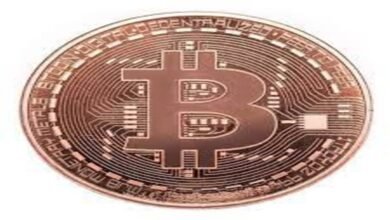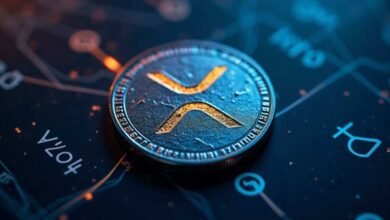
XRP and Its Technology: Understanding the Foundations of a Global Payment Solution
XRP, the native cryptocurrency of the XRP Ledger (XRPL), is one of the most prominent digital assets in the cryptocurrency world. Unlike many cryptocurrencies, which focus primarily on decentralization and being store-of-value assets like Bitcoin, XRP was designed with a practical, real-world utility in mind: enabling fast, cost-efficient, and scalable cross-border payments. To understand why XRP is gaining traction within the financial industry and among cryptocurrency enthusiasts, it’s essential to examine its underlying technology and the key features that differentiate it from other digital assets.
The XRP Ledger (XRPL)
At the heart of XRP is the XRP Ledger, an open-source decentralized blockchain platform that serves as a robust foundation for XRP and its associated ecosystem. XRP operates on the XRP Ledger, where it functions as a payment tool for facilitating cross-border transactions and acting as a bridge currency. The XRPL is designed to be fast, secure, scalable, and energy-efficient, making it a natural fit for global financial applications.
The XRP Ledger was created by Ripple Labs, a technology company founded in 2012, with the goal of addressing inefficiencies in the traditional financial system, particularly in cross-border payments. Ripple’s vision for XRP is to help financial institutions transfer funds globally in a seamless, affordable, and timely manner.
Key Features of the XRP Ledger:
- Decentralized Consensus: Unlike proof-of-work (PoW) systems like Bitcoin, the XRP Ledger doesn’t rely on mining. Instead, it uses a consensus algorithm that involves independent validators reaching an agreement on the transaction order. This method allows for a more energy-efficient, faster, and scalable network.
- Open-Source Technology: The XRP Ledger is open-source, which means anyone can participate in its development and contribute to its growth. This ensures transparency and encourages collaboration among developers, businesses, and financial institutions.
- Speed and Scalability: The XRP Ledger is capable of processing around 1,500 transactions per second (TPS), far surpassing many other major blockchain networks. This high throughput is crucial for handling the volume of transactions in the global payment ecosystem.
- Low Transaction Fees: XRP transactions are incredibly cost-effective, with fees often being less than a cent per transaction. This makes it a viable solution for transferring money across borders, especially in cases where traditional financial systems can charge exorbitant fees for international transfers.
- Tokenization and Smart Contracts: The XRP Ledger also supports tokenization, meaning it can issue and transfer any kind of asset (not just XRP) in a decentralized manner. While the XRPL is not primarily known for supporting smart contracts like Ethereum, its features are sufficient for many use cases, including financial settlements and payments.
The XRP Consensus Algorithm: A Unique Approach
One of the defining features of XRP is its consensus mechanism. Unlike Bitcoin and many other cryptocurrencies that use Proof-of-Work (PoW) to validate transactions, XRP utilizes the RippleNet Consensus Algorithm. This consensus algorithm is designed to be faster, more energy-efficient, and scalable, making it an ideal fit for global financial transactions.
How the Consensus Mechanism Works:
In the XRP Ledger, validators are responsible for validating transactions and ensuring that they are legitimate. These validators are independent entities, such as financial institutions, universities, and other trusted organizations. The Ripple network does not rely on mining or Proof-of-Work (PoW) consensus, which requires significant energy consumption. Instead, the XRP Ledger uses a more efficient “RippleNet Consensus” that doesn’t rely on computational power but on a network of validators that achieve a consensus on the validity of transactions.
When a transaction is initiated, it is broadcast to the network of validators. These validators then review the transaction to ensure it is valid based on predefined rules. The validators check that the transaction does not conflict with the state of the ledger and is consistent with other pending transactions. Once 80% of the validators agree on the transaction’s validity, it is confirmed and added to the ledger. This consensus process occurs every 3-5 seconds, making XRP transactions settle quickly and efficiently.
Advantages of XRP’s Consensus Mechanism:
- Energy Efficiency: XRP’s consensus mechanism does not require intensive computational work or mining, which significantly reduces its environmental impact compared to traditional cryptocurrencies like Bitcoin.
- Speed: The consensus algorithm allows transactions to be settled in 3-5 seconds, making XRP one of the fastest cryptocurrencies for transferring funds across the globe.
- Lower Costs: Since the network does not require mining, the cost of running the XRP network is significantly lower than Proof-of-Work (PoW) blockchains, which require significant computational resources.
The Role of XRP in Cross-Border Payments
XRP was primarily designed to serve as a solution for the inefficiencies in the traditional cross-border payment system. The global payments industry is plagued by issues such as high fees, long transaction times, and reliance on intermediaries. Traditional payment networks like SWIFT require multiple intermediaries, each of which can add additional fees and delays. XRP’s unique value proposition lies in its ability to facilitate cross-border payments quickly and at a fraction of the cost compared to traditional systems.
XRP as a Bridge Currency:
XRP is often referred to as a “bridge currency” because it allows for the seamless exchange of one currency for another, without the need for direct fiat-to-fiat conversion. When a person or financial institution wants to transfer money across borders, they can use XRP to facilitate the transaction. The XRP Ledger acts as an intermediary between the sending and receiving currencies, converting the sender’s fiat currency into XRP, which is then exchanged for the recipient’s fiat currency.
This ability to act as a bridge currency eliminates the need for multiple intermediaries and allows for fast, low-cost international transfers. Financial institutions, including banks, money transfer services, and payment providers, can leverage XRP to process payments more efficiently than traditional methods.
Example: A person in the United States wants to send money to a recipient in Japan. Instead of going through multiple intermediary banks, which could take several days and incur high fees, XRP can be used as an intermediary currency. The sender’s U.S. dollars are converted into XRP, sent over the XRP Ledger, and then exchanged for Japanese yen when the recipient receives the funds. This process typically takes just a few seconds and costs a fraction of the fees associated with traditional banking channels.
XRP’s Role in Financial Institutions and Liquidity Providers
XRP is not only used by individuals for peer-to-peer transfers but also has gained significant adoption among financial institutions and liquidity providers. Ripple Labs, the company behind XRP, has established partnerships with numerous financial institutions worldwide to help them improve their payment systems by incorporating XRP as a liquidity tool.
Liquidity On-Demand:
One of the key benefits of XRP for financial institutions is its ability to provide liquidity on-demand. Traditional cross-border payment systems often require financial institutions to pre-fund accounts in foreign countries to facilitate transfers. This pre-funding can tie up large amounts of capital, reducing the liquidity available for other operations.
By using XRP, financial institutions can avoid pre-funding by instead using XRP as a bridge currency. They can purchase XRP as needed, use it to settle transactions, and then sell it when the transaction is complete. This provides on-demand liquidity without the need to hold significant amounts of foreign currency, making the process more efficient and less capital-intensive.
Ripple has also partnered with several major financial institutions and payment providers, including Santander, American Express, and SBI Holdings, to integrate XRP into their payment networks. These partnerships help expand the reach and adoption of XRP and its underlying technology.
XRP’s Environmental Impact and Sustainability
A common concern surrounding many cryptocurrencies is their environmental impact, particularly in the case of Proof-of-Work (PoW) networks like Bitcoin, which require significant energy consumption for mining. XRP’s consensus algorithm, however, is much more energy-efficient, as it does not rely on mining or proof-of-work. Instead, the network operates through a consensus mechanism that involves trusted validators.
As a result, XRP has a relatively low carbon footprint compared to other cryptocurrencies. This makes it a more sustainable option for financial institutions and individuals concerned with the environmental impact of their transactions. XRP’s low energy consumption and fast transaction speeds are key factors contributing to its growing adoption in global financial networks.
Future of XRP and Its Continued Innovation
XRP is poised to play an increasingly important role in the future of digital finance. As the cryptocurrency space continues to evolve, XRP’s role as a bridge currency and payment solution is becoming more central to the growth of global financial systems. Ripple’s focus on expanding partnerships with financial institutions, improving the scalability of the XRP Ledger, and ensuring compliance with global regulations makes it an attractive option for both businesses and individuals seeking efficient payment solutions.
As the world continues to embrace blockchain technology and digital currencies, XRP’s efficient, scalable, and low-cost features position it well for broader adoption, especially in cross-border payments, decentralized finance (DeFi), and global remittances.
: XRP’s Technology and Its Potential in the Future of Finance
XRP’s underlying technology, including the XRP Ledger, its consensus mechanism, and its role as a bridge currency, sets it apart from many other cryptocurrencies. XRP’s fast, secure, and cost-efficient features make it an ideal solution for cross-border payments and financial institutions looking to streamline global transactions. Its low environmental impact and continued development within the cryptocurrency and financial sectors suggest that XRP will remain a crucial player in the future of decentralized finance and global payment systems.
As Ripple Labs continues to innovate and expand its partnerships, XRP’s influence in the global financial ecosystem is expected to grow, making it a key asset in shaping the future of digital finance.



